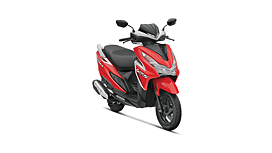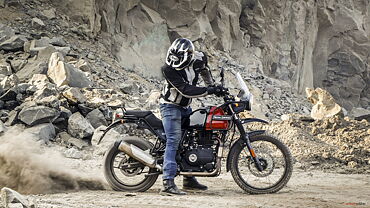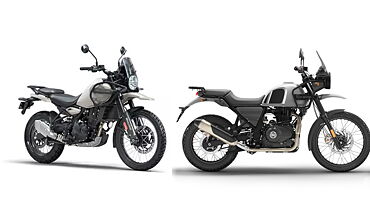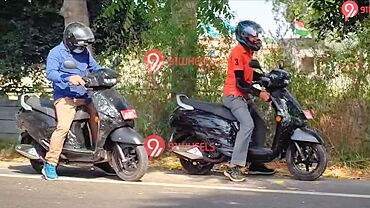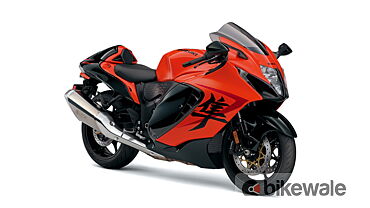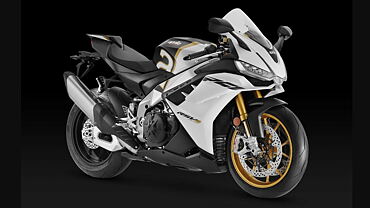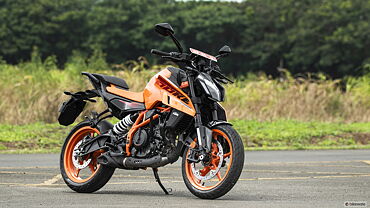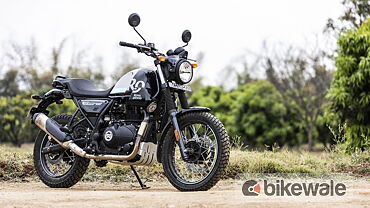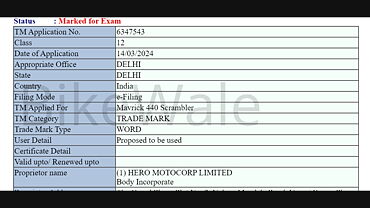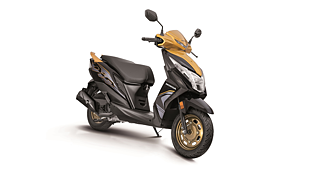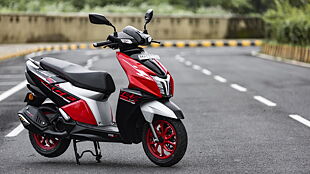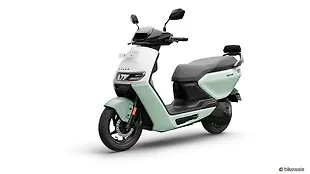How to choose tyres for your motorcycle

Tyres are the main parts on a motorcycle that enable one to get the bike onto a surface without aids like a stand. The right tyres are what you need for optimum efficiency, performance and handling. So how do you choose the best tyres for your motorcycle?
To begin with, there are four main types of tyres; tube type, tubeless, bias-ply and radial. Tube-type tyres consist of the tyre and tube with valve and rim. Manufacturers are gradually moving towards tubeless tyres because in case of a puncture, there is instant leakage as the air finds a way between the tube, tyre and through the rim hole. Tubeless tyres, on the other hand, consist of an inner tube that is integral within the tyre. The valve is permanently fixed to the rim making the assembly airtight. In case of a puncture, loss of air is very slow, since air can escape only through the narrow gap made by the penetration of a nail. Contrary to popular belief, tubeless tyres do burst; but only due to negligence of air pressure or manufacturing defect.

Bikes with spoke wheels generally use tyres with an inner tube with exceptions like the BMW R 1200 GS, Triumph Tiger 1200, Ducati Multistrada 1200 Enduro and Dakar race bikes. These bikes have the spokes fitted outside the tyre. You could use tubeless tyres if your motorcycle has steel or alloy wheels.
Bias-ply tyres use cords that are made up of a fabric like nylon, rayon, or polyester from bead to bead, running across the tyre in alternating layers. Whereas the cords on radial tyres are made of fabric or steel and run across the tyre radially from bead to bead. Alternating layers of the cords are placed in the tread portion of the tyre so radials are not as thick as bias-ply tyres, giving them an advantage when it comes to wide tyres.

Bias-ply tyres also do not shed heat quickly and have a stiff sidewall due to the fact that all the belts run from sidewall to sidewall. On the other hand, radial tyres’ cords dissipate heat better and the fewer layers of cords on the sidewall allow the tyre to flex more. Hence, touring motorcycles are most likely to use bias-ply tyres as they offer load-carrying capacity and longevity while supersport or streetfighter motorcycles would prefer radials for better grip.
Now that you know the types, you will need to further decide on a tyre depending on the tread pattern and compound.
What is tread pattern and compound?
Compound is the material that makes up the tyre in its entirety. Tread refers to the rubber on its circumference that makes contact with the road. The tread consists of the crown of the tyre and its shoulders. Tread pattern, on the other hand, is the design on the tyre which comprises of channels and grooves that exist to channel water away from the contact patch. This prevents the tyre from losing grip on the road in wet conditions.

Different motorcycles and riding conditions require different tyres. For example; MotoGP bikes usually use soft slick tyres because the more rubber they have in contact with the road, the more grip they’ll have. However, they do use tyres with a tread pattern while racing in the rain. Patterns are also found on road bikes and scooters for that matter. On the other hand, touring bikes use a hard compound tyre which provide durability and consistent performance over a wide range of surfaces, conditions and temperatures.
Size matters
The tyre you choose should fit the appropriate rim size. Using tyres that are way wider than the befitting size would surely give you more grip, but they are not necessarily better. It could result in lesser agility along with acceleration and suspension duties being hampered.

Bikes like this Ducati Monster 797 use wide tyres to provide better traction and grip for the massive amount of power that is transferred to the rear wheel. It also aids the aesthetics of the bike. After all, who isn’t a fan of a fat rear tyre?

Motorcycles in the 200cc-400cc segment also use wide tyres but not as wide as larger capacity bikes. Their hardness depends upon the kind of motorcycle it is – a performance-oriented, high-horsepower 390 Duke will have a softer compound than a Pulsar 220, which is geared more towards longevity.

Commuter bikes like this TVS Victor come equipped with skinny tyres because they focus more on function than form. Such kinds of tyres are good for handling and manoeuvrability in traffic along with being long-lasting; thanks to the hard compound they are made of.

Most scooters sports tyres that are smaller in diameter to complement the segment’s body style. The Honda Grazia rides on conventional 12-inch front and 10-inch rear tyre setup. However, there are some exceptions like the Aprilia SR150 which uses 14-inch wheels.

Adventure touring motorcycles like this Royal Enfield Himalayan rides on something that is called dual-purpose tyres. As their name suggests, these tyres can be used on tarmac as well as dirt and sand thanks to their tread pattern. These tyres sport a ‘block pattern’ which can dig into the surface and push out gravel or dirt for added grip.
Now that you are enlightened..
You need to know what size your motorcycle or scooter specifically rides on. Manufacturers’ mention stock tyre sizes in the owner’s manual, or stickers on the frame, swingarm or the front apron if it’s a scooter. You could also look at the sidewall of the tyres your bike or scooter came with. Your riding style and conditions also are a deciding factor. If you use your bike for daily commuting or long-distance touring, choosing a tyre with a hard compound is ideal. Whereas the occasional canyon runs would call for softer or mixed compound tyres as they provide better grip on leans.
After you have finalised on the tyre, we at BikeWale would recommend you to make a purchase from that tyre manufacturer’s factory outlets. This guarantees that you will not only get a brand new, unused tyre but also at a lower cost.
Gallery
1/9
Honda Grazia Action
Double Tap to Zoom


















